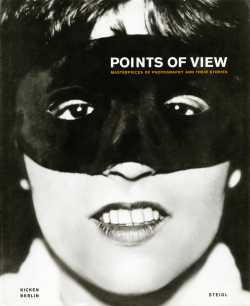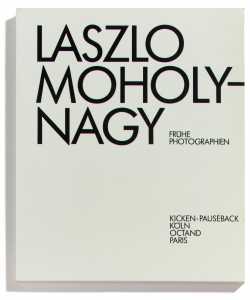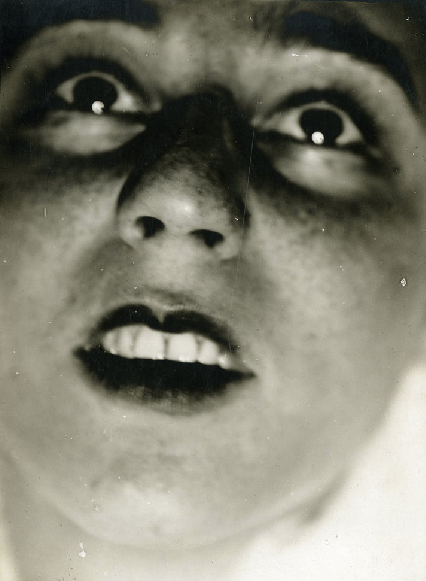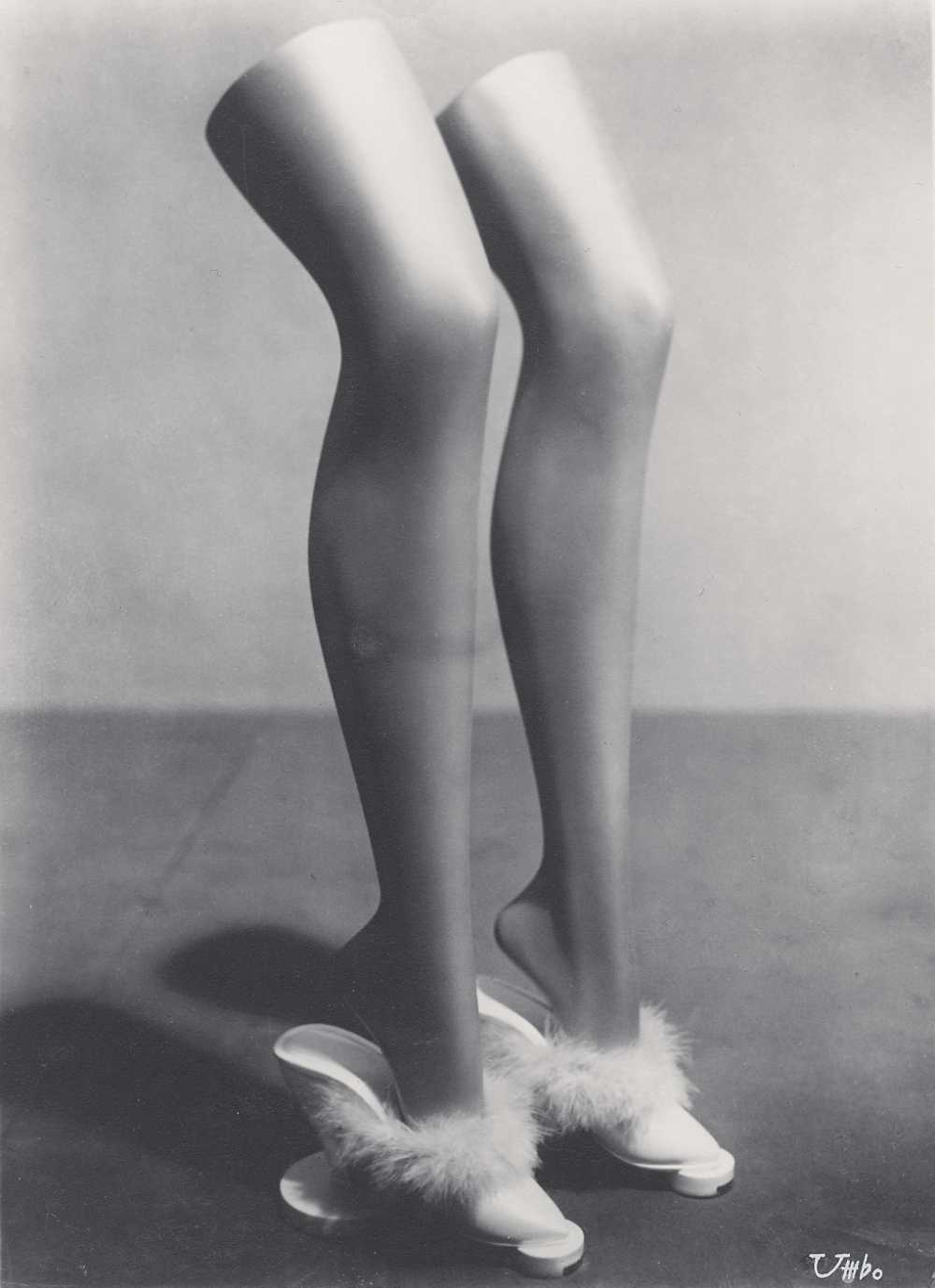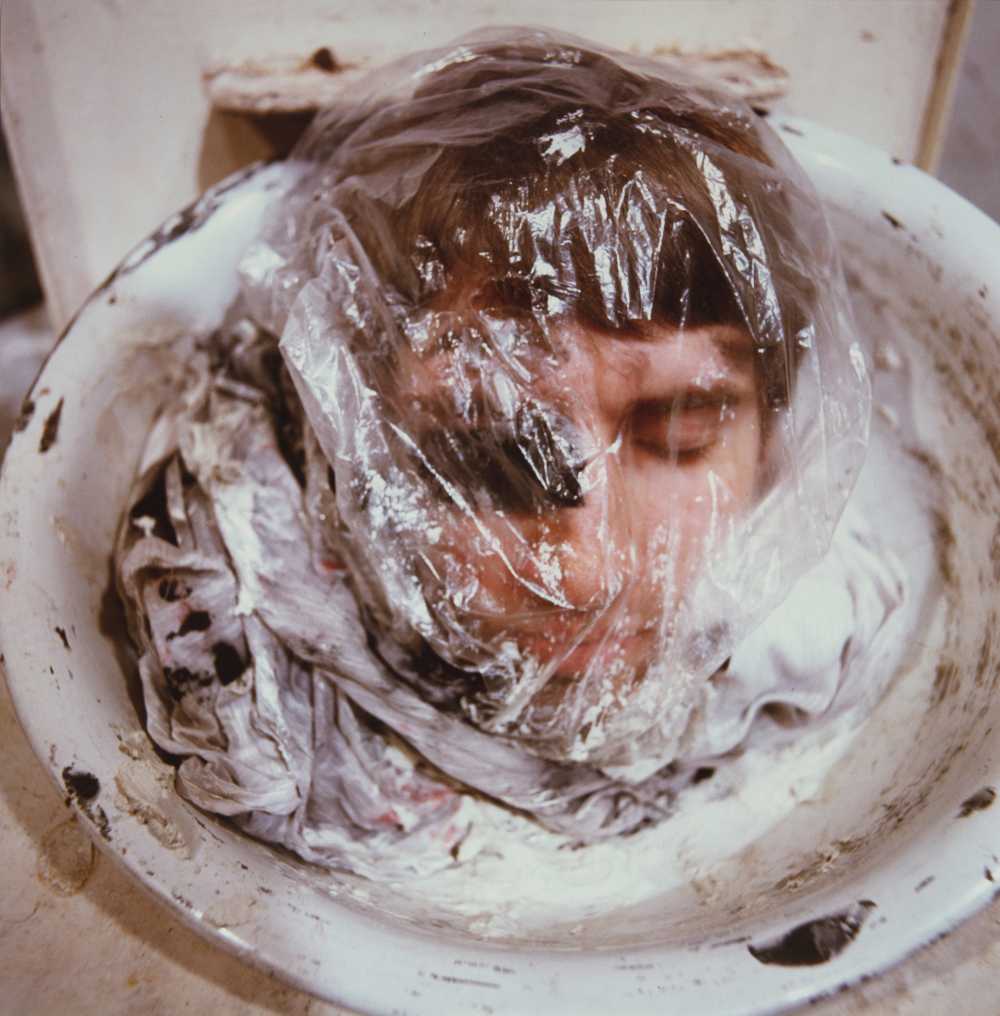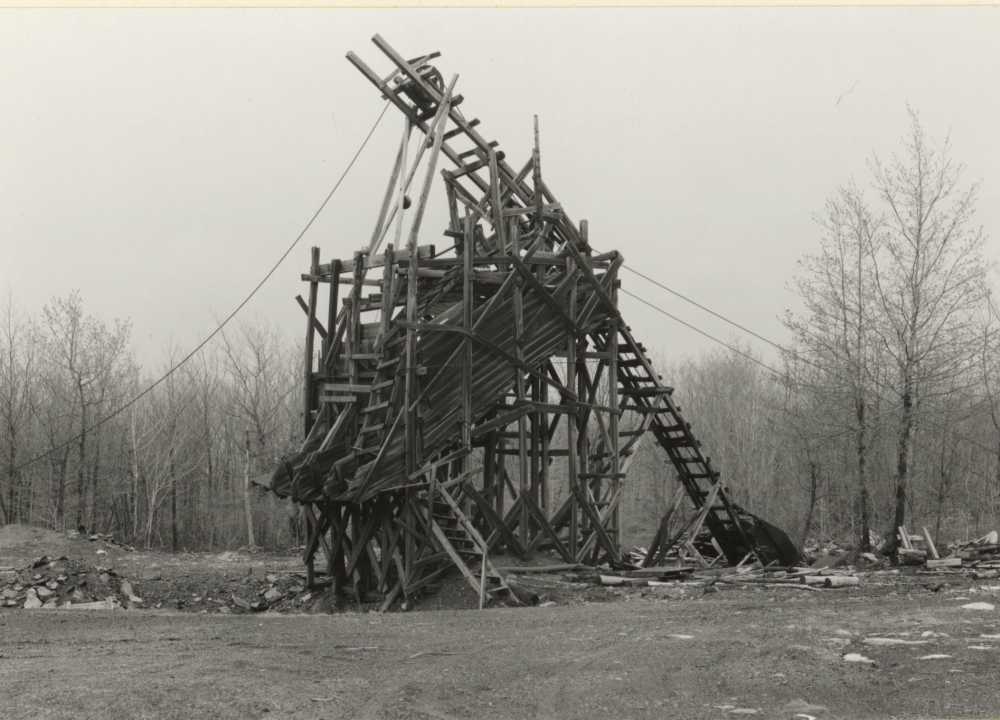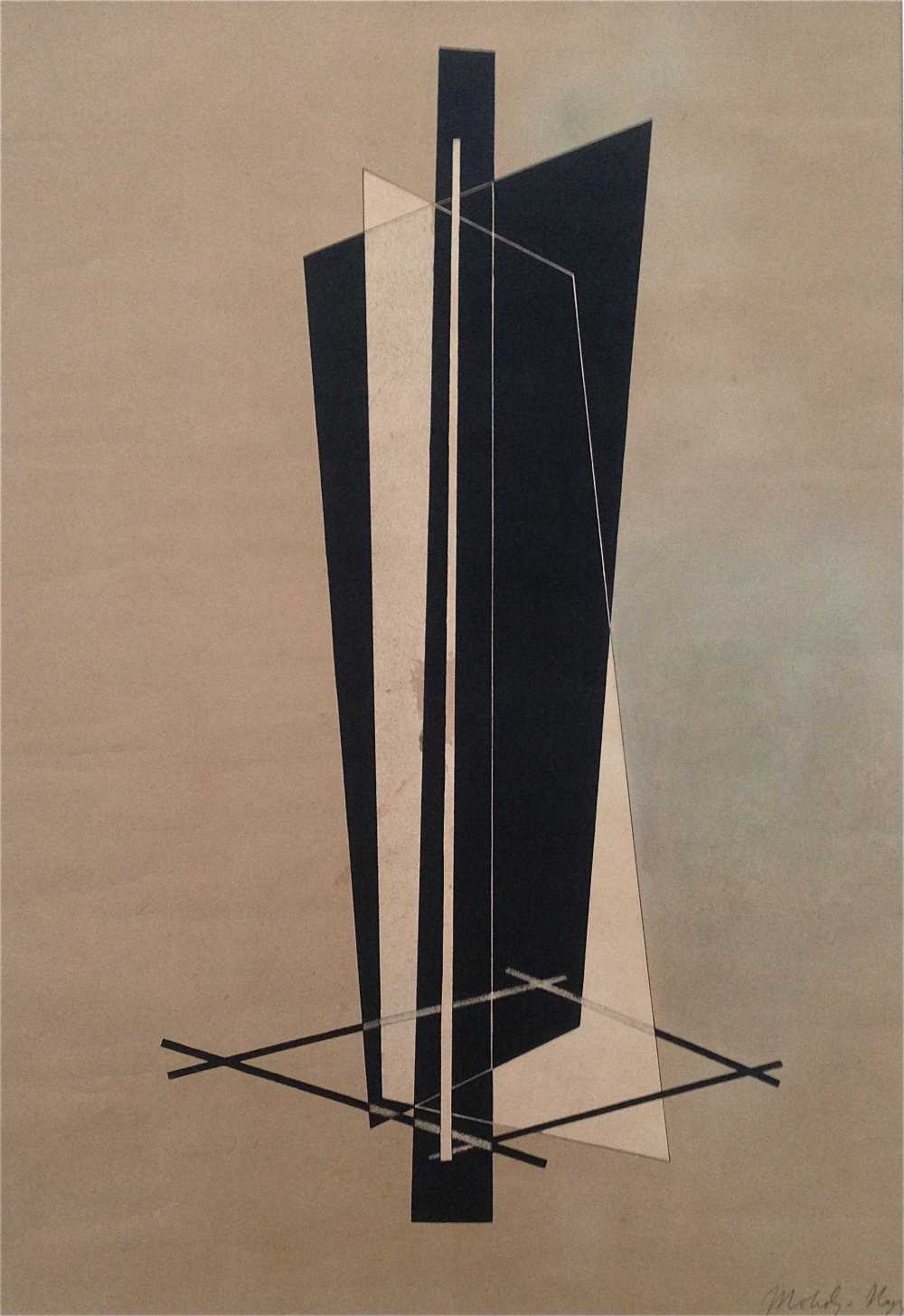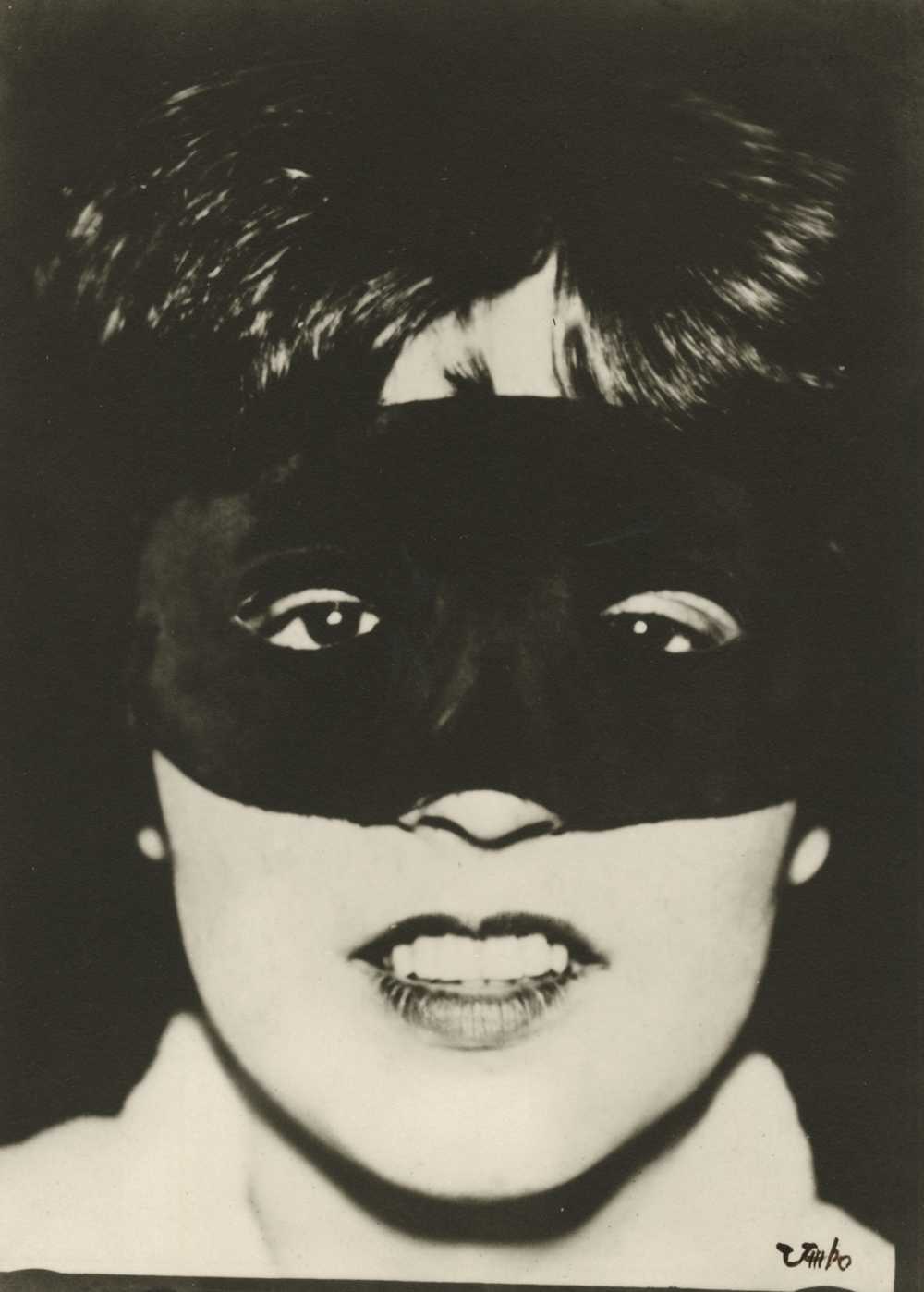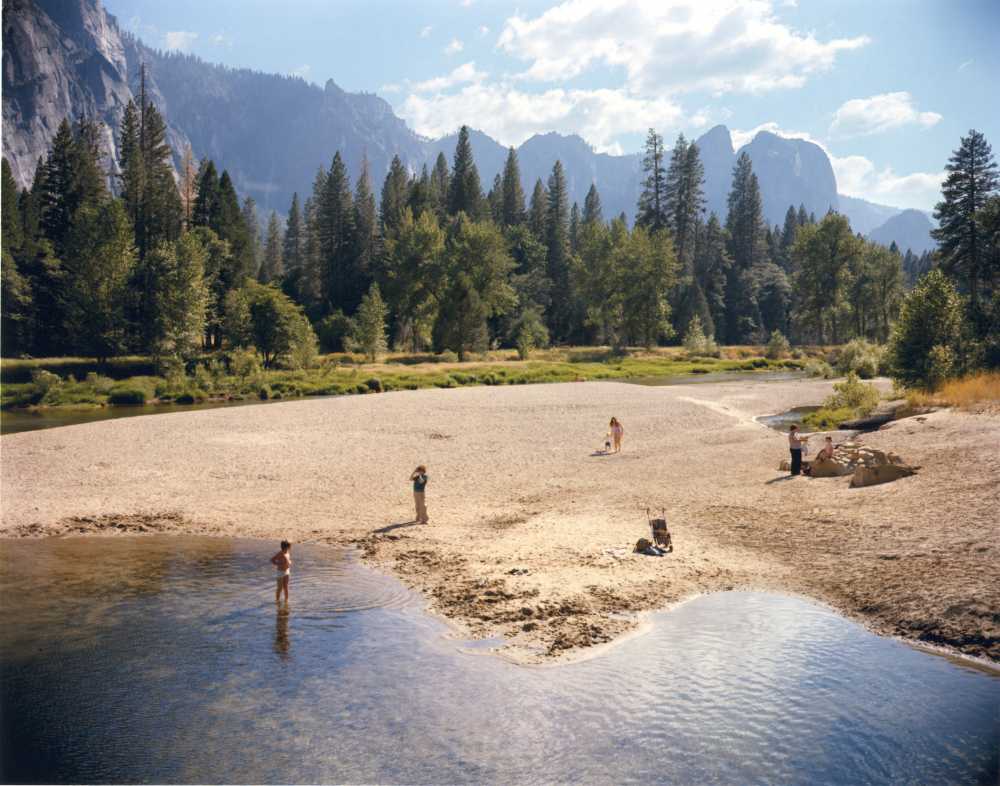László Moholy-Nagy
1895–1946
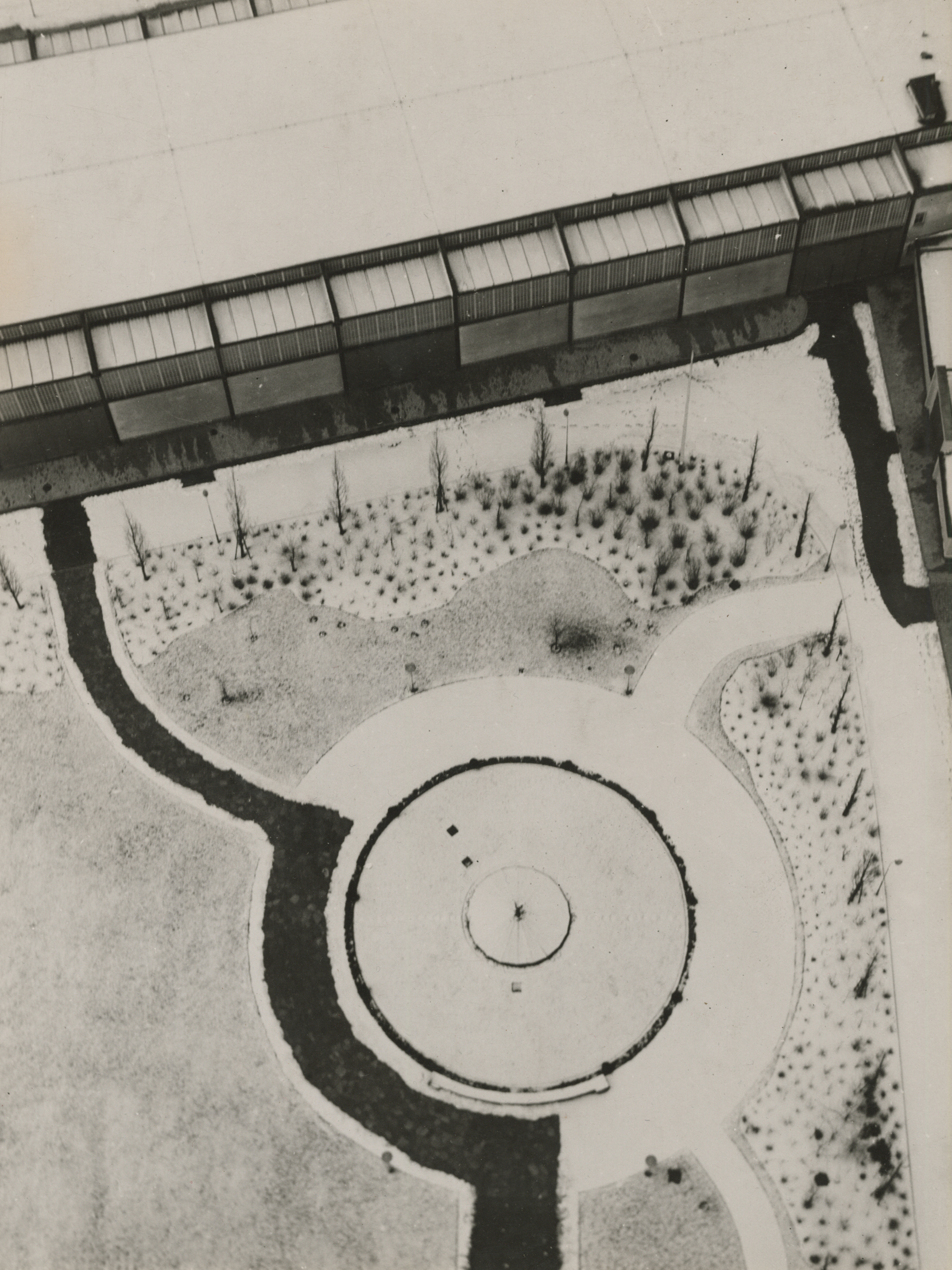
LÁSZLÓ MOHOLY-NAGY
Berlin in Winter Seen From the Radio Tower, 1928
© Hattula Moholy-Nagy / VG Bild-Kunst, Bonn 2018 / Courtesy Kicken Berlin
Biography
Trained as a lawyer, László Moholy-Nagy (American, born Hungary, 1895–1946) moved to Berlin in 1919 to pursue his creative interests. He experimented with photography, painting, collage, and drawing and worked with his wife Lucia Moholy on publications in art theory and manifestos such as Malerei, Photographie, Film (1925). By mid-decade of the 1920s he was a central figure in the circle of European avant-garde artists. He delved into Dada collage and appropriated Constructivist ideas. He published in De Stijl and participated in the 1922 First International Congress of Progressive Artists in Düsseldorf with El Lissitzky, Raoul Hausmann, Theo van Doesburg, and Tristan Tzara and in the Dada-Constructivist Congress in Weimar, where he met Walter Gropius. He experimented with the photogram’s light drawing technique. In 1923 he was appointed to the Bauhaus Weimar and became Head of the Metal Workshop. He also took over Johannes Itten's role co-teaching the Bauhaus preliminary course with Josef Albers. Already before the photography class had been established in 1929 he inspired countless students to experiment with the medium. From 1928 on he worked in Berlin as a designer and emigrated to London in 1934. In 1937 he was one of the co-founders of the “New Bauhaus” in Chicago and until his death headed the School of Design that emerged from it.
Exhibitions
-
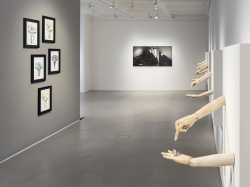 RoundtripKicken Berlin c/o Villa GrisebachFeb 12 — Mar 14, 2020
RoundtripKicken Berlin c/o Villa GrisebachFeb 12 — Mar 14, 2020 -
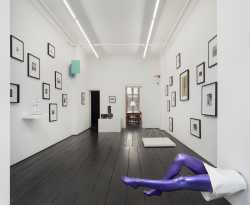 A Bauhaus ProjectKicken Berlin c/o Galerie Mehdi ChouakriSep 13 — Dec 15, 2019
A Bauhaus ProjectKicken Berlin c/o Galerie Mehdi ChouakriSep 13 — Dec 15, 2019 -
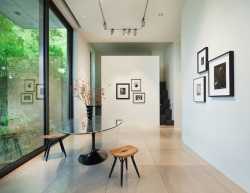 HIGHLIGHTSSep 12, 2018 — Feb 28, 2019
HIGHLIGHTSSep 12, 2018 — Feb 28, 2019 -
MIXED MEDIA (IV)About the BodyApr 28 — Aug 31, 2018
-
Mixed Media (III)About Architecture. Joachim Brohm in DialogSep 19, 2017 — Feb 02, 2018
-
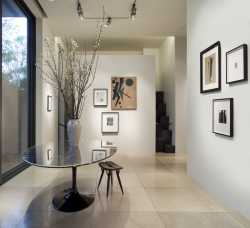 MIXED MEDIA (II)About AbstractionMar 17 — Apr 22, 2016
MIXED MEDIA (II)About AbstractionMar 17 — Apr 22, 2016 -
 1974… 40 Years. 40 PhotographsSep 20, 2014 — Feb 26, 2015
1974… 40 Years. 40 PhotographsSep 20, 2014 — Feb 26, 2015 -
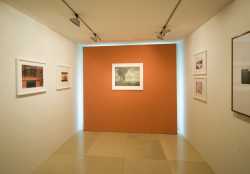 ASPECTS OF COLORA History of Color in Photography from Pictoralism to ContemporaryApr 30 — Jun 04, 2011
ASPECTS OF COLORA History of Color in Photography from Pictoralism to ContemporaryApr 30 — Jun 04, 2011 -
 Happy Birthday Bauhaus!Jul 21 — Dec 19, 2009
Happy Birthday Bauhaus!Jul 21 — Dec 19, 2009 -
László Moholy-Nagy34 Vintage PrintsAug 18 — Sep 02, 1989
-
Happy Birthday PhotographyVintage Photographs from 1840–1956Aug 01 — Sep 30, 1989
-
László Moholy-NagyVintage PrintsAug 10 — Nov 05, 1988
Publications
Newsletters
Press
-
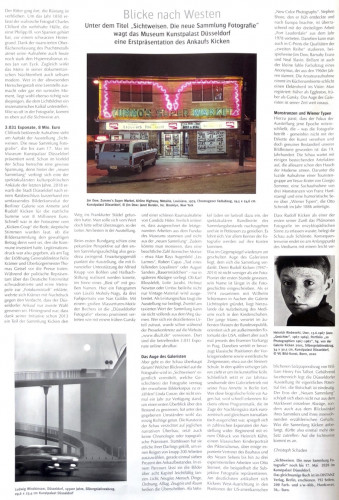
Photonews: Blicke nach Westen
Apr 01, 2020
-
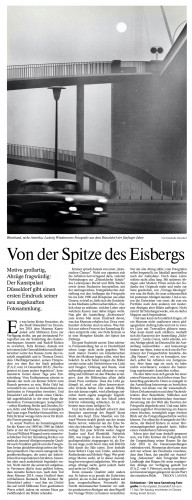
Frankfurter Allgemeine Zeitung: Von der Spitze des Eisbergs
Feb 28, 2020
-
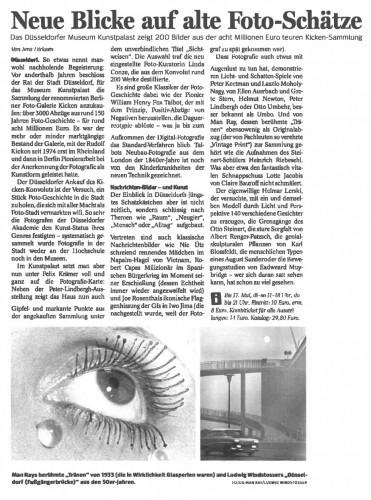
Neue Rhein Zeitung: Neue Blicke auf alte Foto-Schätze
Feb 20, 2020
-
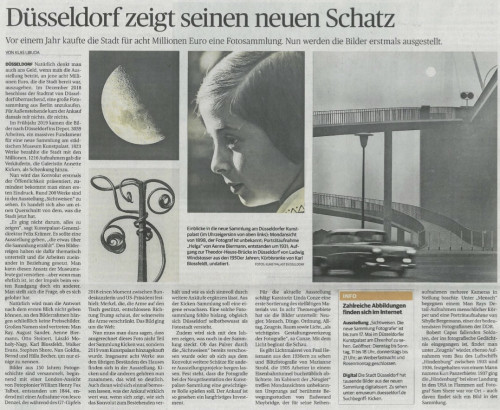
Rheinische Post: Düsseldorf zeigt seinen neuen Schatz
Feb 19, 2020
-
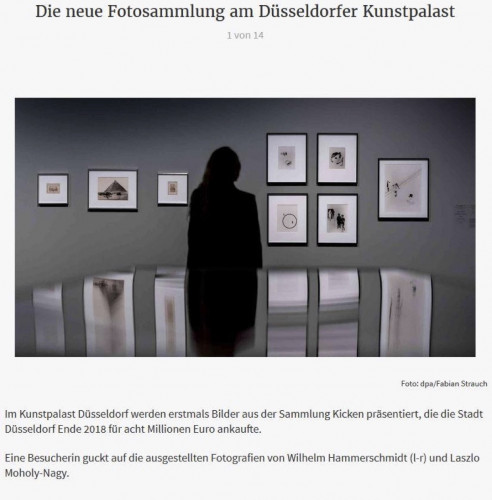
RP Online: Die neue Fotosammlung am Düsseldorfer Kunstpalast
Feb 18, 2020
-
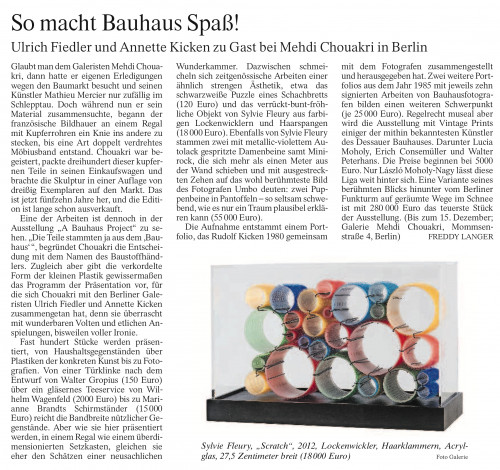
FRANKFURTER ALLGEMEINE ZEITUNG: HAVING FUN WITH BAUHAUS!
Nov 02, 2019
-
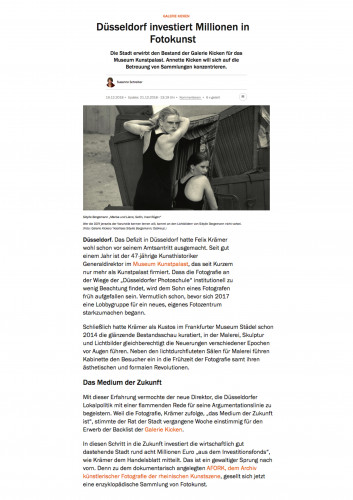
Handelsblatt: Düsseldorf investiert Millionen in Fotokunst
Dec 19, 2018
-
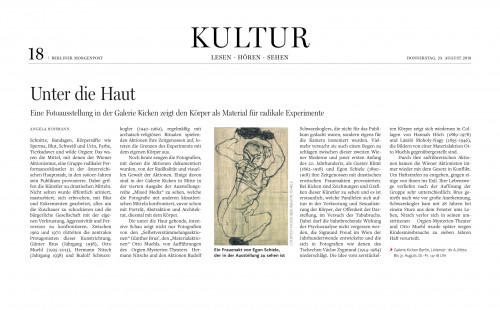
Berliner Morgenpost: Under the Skin
Aug 23, 2018
-
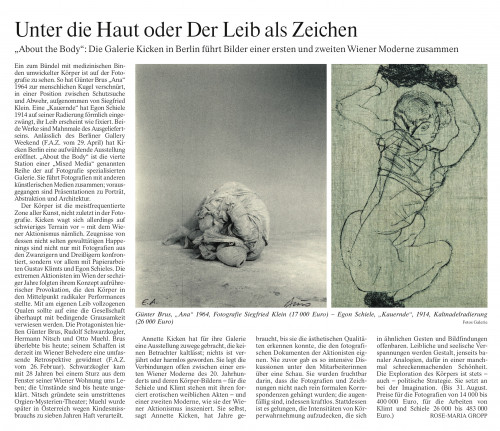
Frankfurter Allgemeine Zeitung: Under the Skin ...
May 05, 2018
-

Der Tagesspiegel: Up Close and Personal
Apr 28, 2018
-
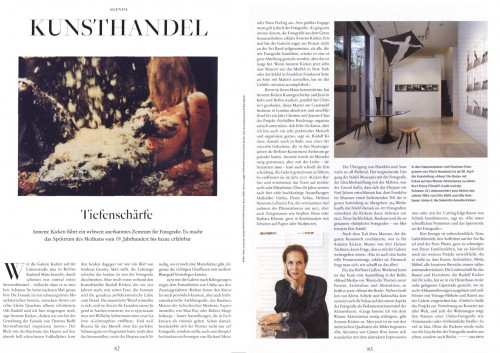
WELTKUNST: Depth of Focus
Apr 24, 2018
-
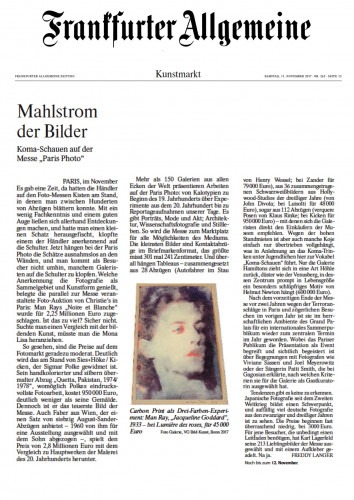
Frankfurter Allgemeine Zeitung: Mahlstrom der Bilder
Nov 11, 2017
-
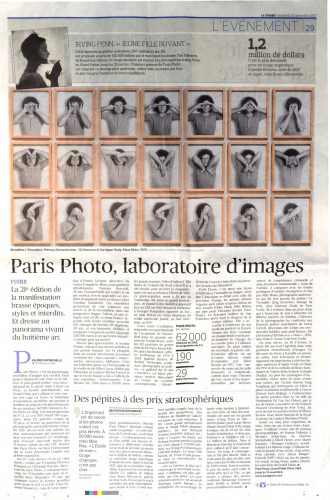
Le Figaro: Paris Photo, l'aboratoire d'images
Nov 10, 2017
-
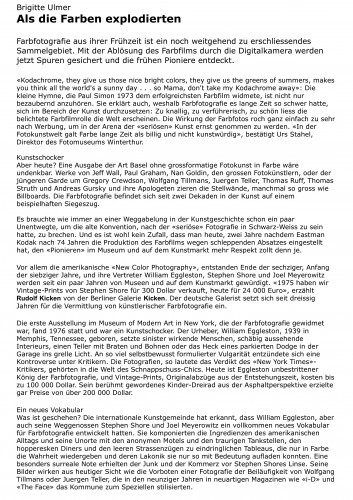
Neue Zürcher Zeitung: Als die Farben explodierten
Jun 11, 2011
-
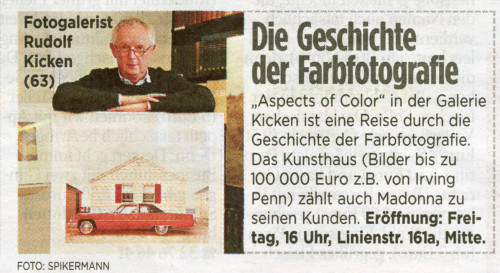
Berliner Zeitung: Die Geschichte der Farbfotografie
Apr 28, 2011
-
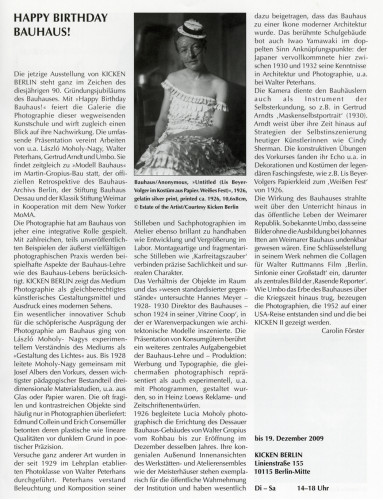
Brennpunkt: Happy Birthday Bauhaus!
Oct 01, 2009
-
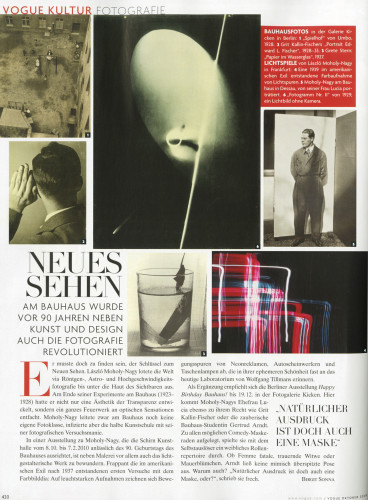
VOGUE: Neues Sehen
Oct 01, 2009
-
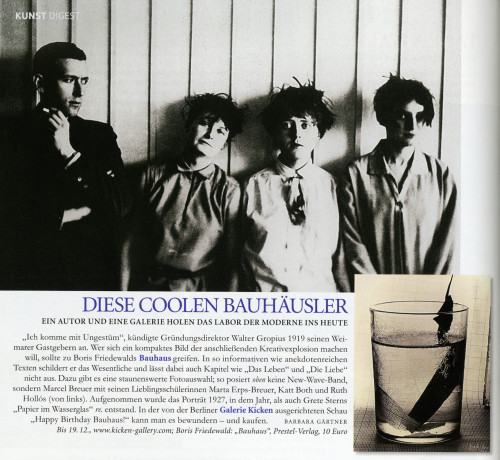
Architectural Digest: Diese coolen Bauhäusler
Sep 01, 2009
-
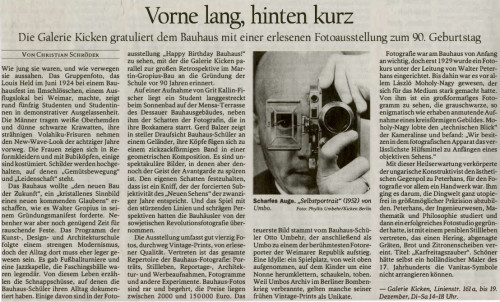
Der Tagesspiegel: Vorne lang, hinten kurz
Aug 15, 2009
-
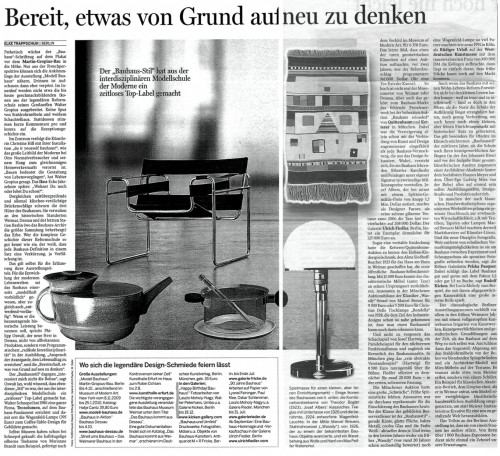
Handelsblatt: Bereit, etwas von Grund auf neu zu denken
Jul 01, 2009
-
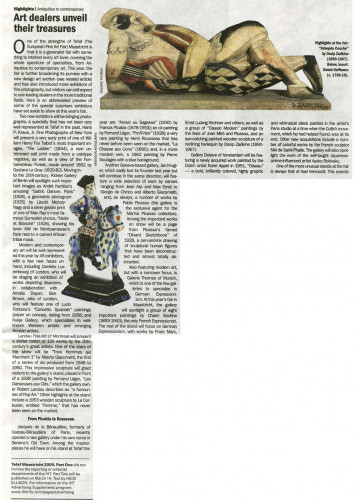
International Herald Tribune: Art Dealers Unveil their Treasures
Mar 07, 2009
-
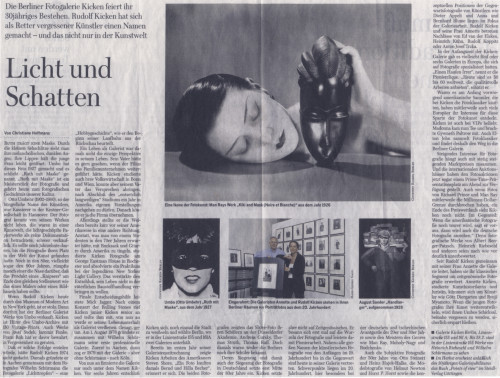
Die Welt: Licht und Schatten
Feb 05, 2006
-
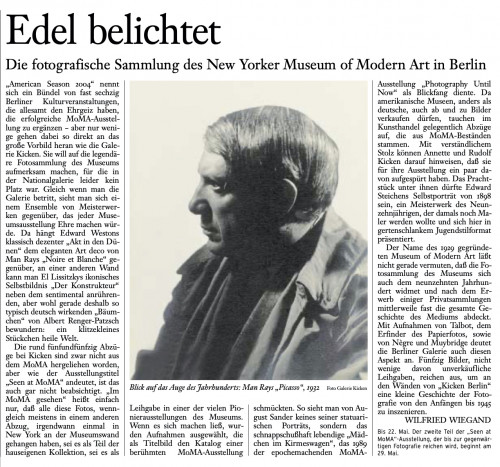
Frankfurter Allgemeine Zeitung: Edel belichtet
May 09, 2004
-
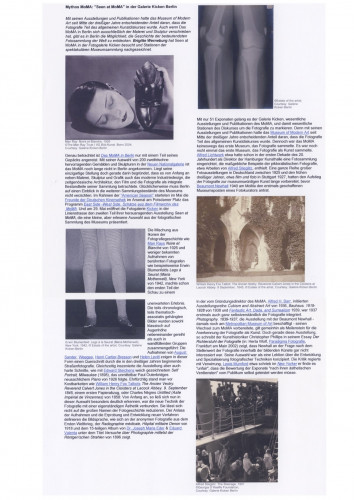
db artmag: Mythos MoMA
May 01, 2004
-
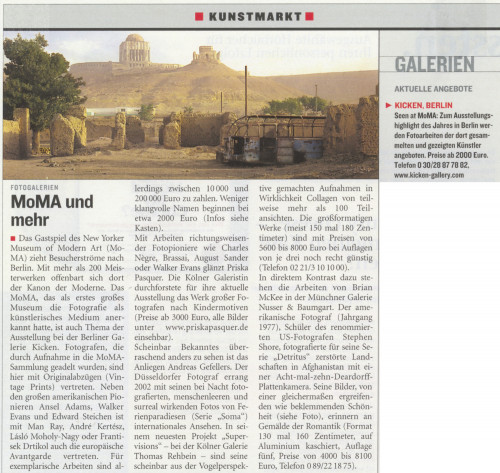
Wirtschaftswoche: MoMA und mehr
Mar 25, 2004
-
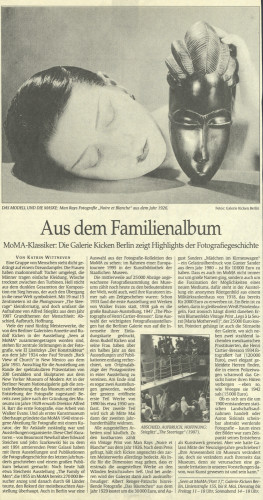
Der Tagesspiegel: Aus dem Familienalbum
Feb 21, 2004
-

unknown source: Geburt einer Kunst
Feb 18, 2004
-
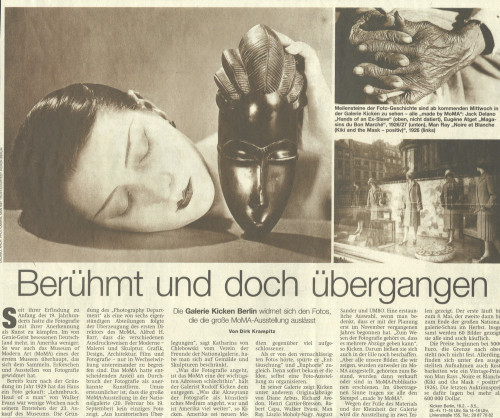
Welt am Sonntag: Berühmt und doch übergangen
Feb 15, 2004
-

tip: Kunst: Sammlung MoMA
Feb 12, 2004
-

art: American Season
Feb 01, 2004
-

Der Tagesspiegel: Ein Birnbaum in seinem Garten stand
Jan 10, 2004
-
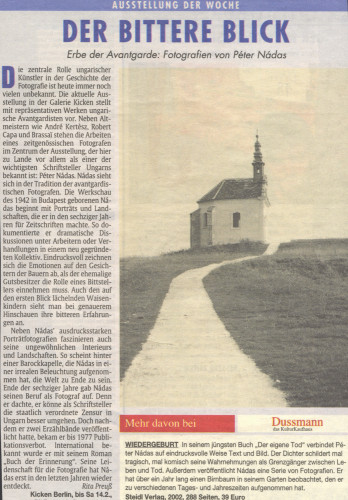
unknown source: Der Bittere Blick
Dec 20, 2003
-
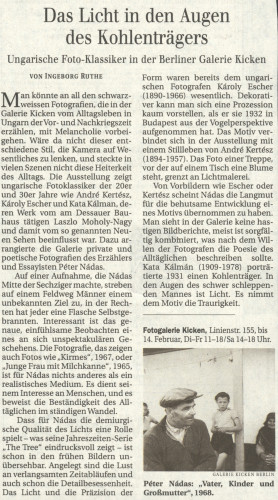
Berliner Zeitung: Das Licht in den Augen des Kohleträgers
Dec 01, 2003
-
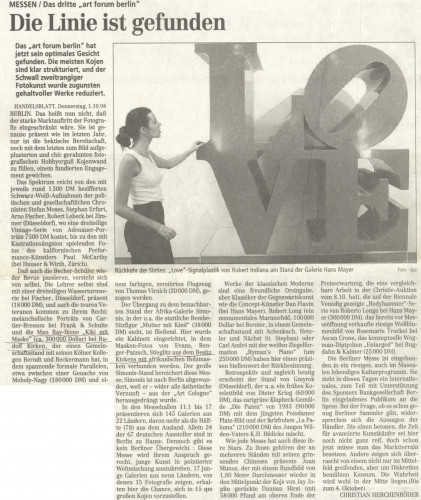
Handelsblatt: Die Linie ist gefunden
Oct 02, 1998
-
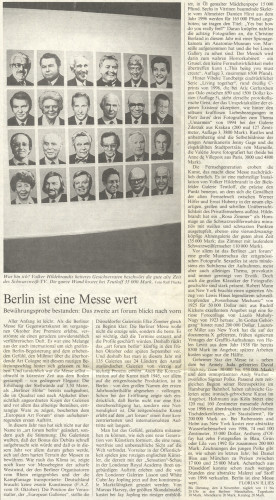
Frankfurter Allgemeine Zeitung: Berlin ist eine Messe wert
Oct 01, 1997
-
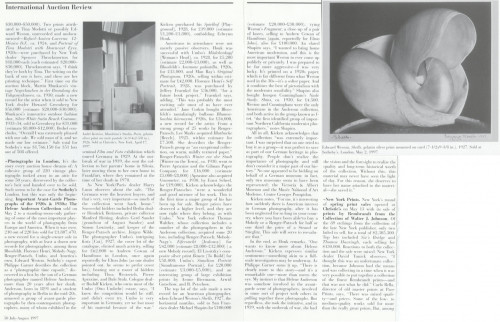
On Paper: International Auction Review
Jul 01, 1997
-
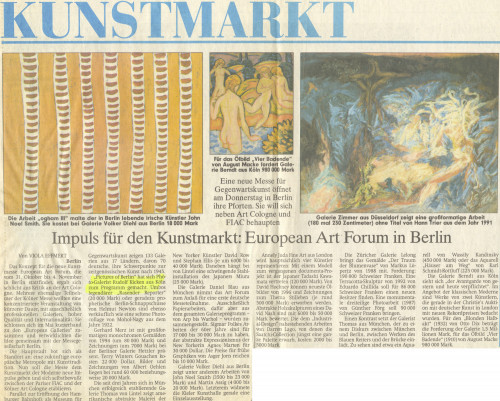
Welt am Sonntag: Impuls für den Kunstmarkt: European Art Forum in Berlin
Oct 27, 1996
-
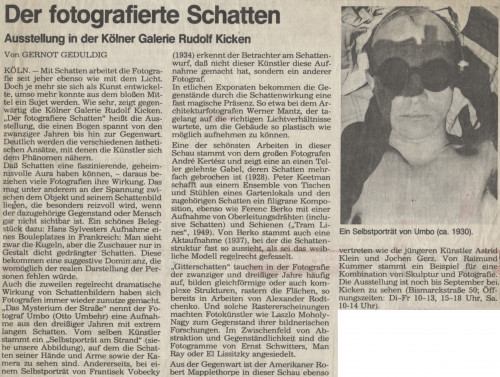
Aachener Nachrichten: Der fotografierte Schatten
Jul 04, 1991
-
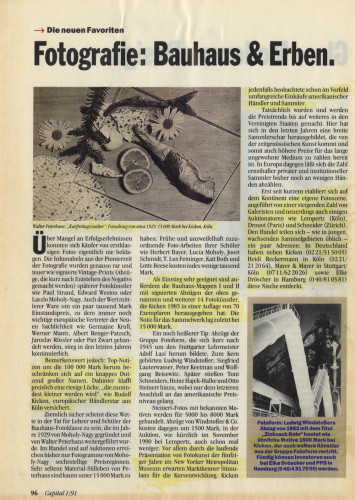
Capital: Fotografie: Bauhaus & Erben
Jan 01, 1991
